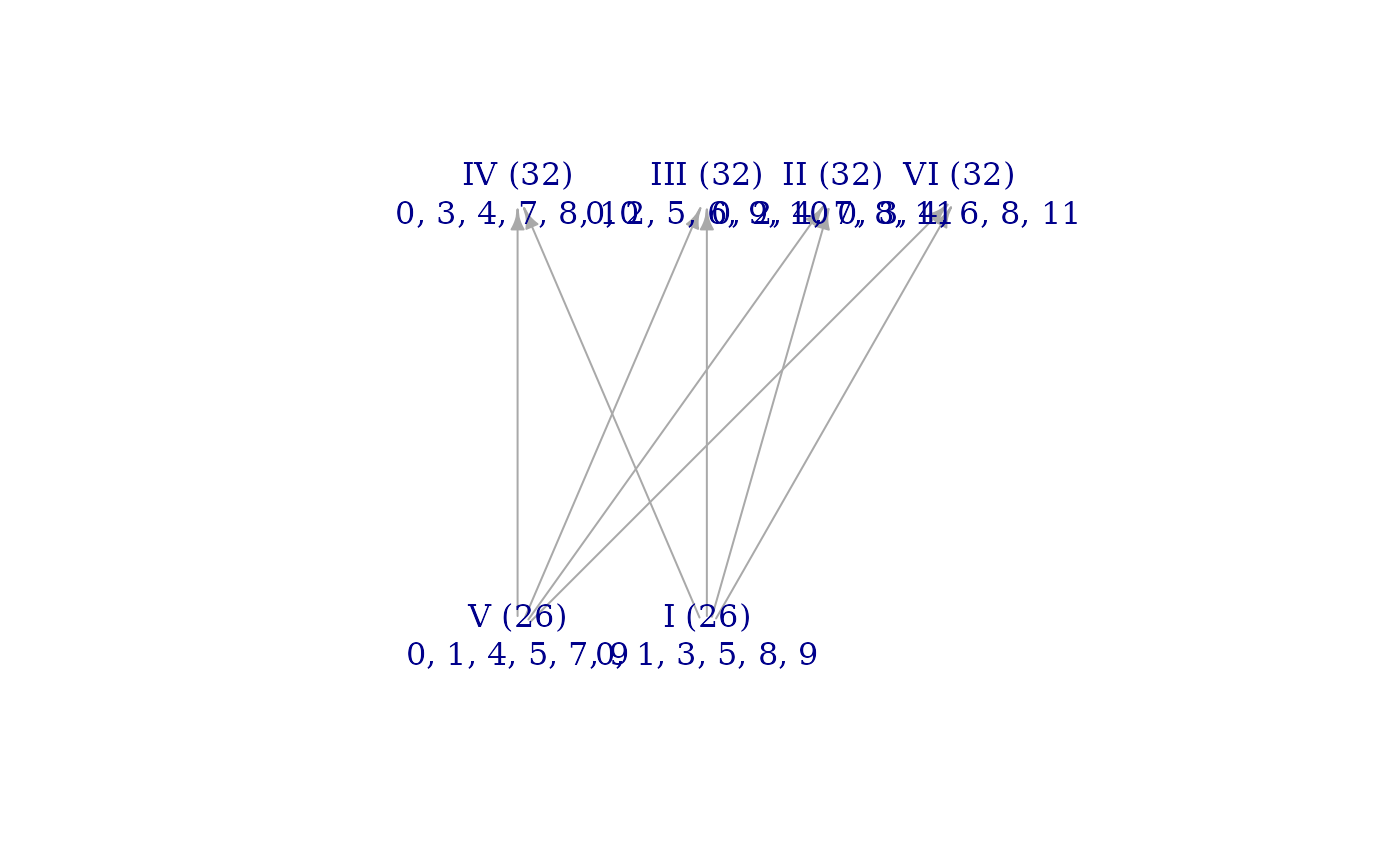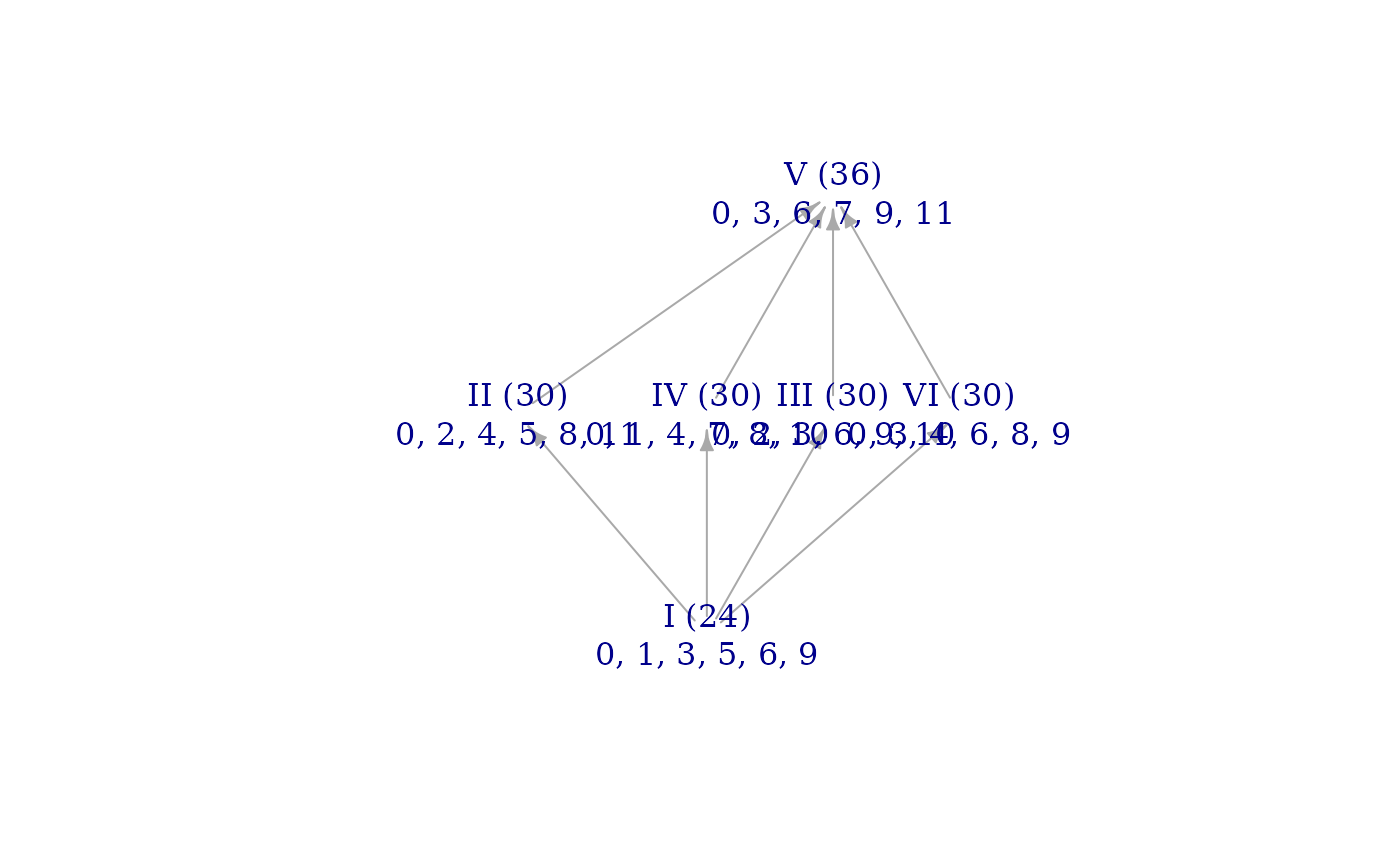Not all hyperplanes are made equal. Those which represent "formal tritone"
comparisons and those which are "exceptional" because they check a
scale degree twice ("Modal Color Theory," 40-41) play a different role
in the structure of the hyperplane arrangement than the rest. This function
returns a "fingerprint" of a scale which is like countsvzeroes() but
which counts the different types of hyperplane separately.
Arguments
- set
Numeric vector of pitch-classes in the set
- ineqmat
Specifies which hyperplane arrangement to consider. By default (or by explicitly entering "mct") it supplies the standard "Modal Color Theory" arrangements of
getineqmat(), but can be set to strings "white," "black", "gray", "roth", "infrared", "pastel," or "rosy", giving theineqmats ofmake_white_ineqmat(),make_black_ineqmat(),make_gray_ineqmat(),make_roth_ineqmat(),make_infrared_ineqmat(),make_pastel_ineqmat(), andmake_rosy_ineqmat(). For other arrangements, the desired inequality matrix can be entered directly.- edo
Number of unit steps in an octave. Defaults to
12.- rounder
Numeric (expected integer), defaults to
10: number of decimal places to round to when testing for equality.
Value
Numeric vector with 3 entries: the number of 'normal' hyperplanes the set lies on, the number of 'exceptional' hyperplanes, and the number of hyperplanes which compare a formal tritone to itself.
Examples
# Two hexachords on the same number of hyperplanes but with different fingerprints
hex1 <- c(0, 1, 3, 5, 8, 9)
hex2 <- c(0, 1, 3, 5, 6, 9)
countsvzeroes(hex1) == countsvzeroes(hex2)
#> [1] TRUE
svzero_fingerprint(hex1)
#> [1] 3 4 1
svzero_fingerprint(hex2)
#> [1] 1 6 1
# Their brightness graphs make their difference more apparent:
brightnessgraph(hex1)
 brightnessgraph(hex2)
brightnessgraph(hex2)

